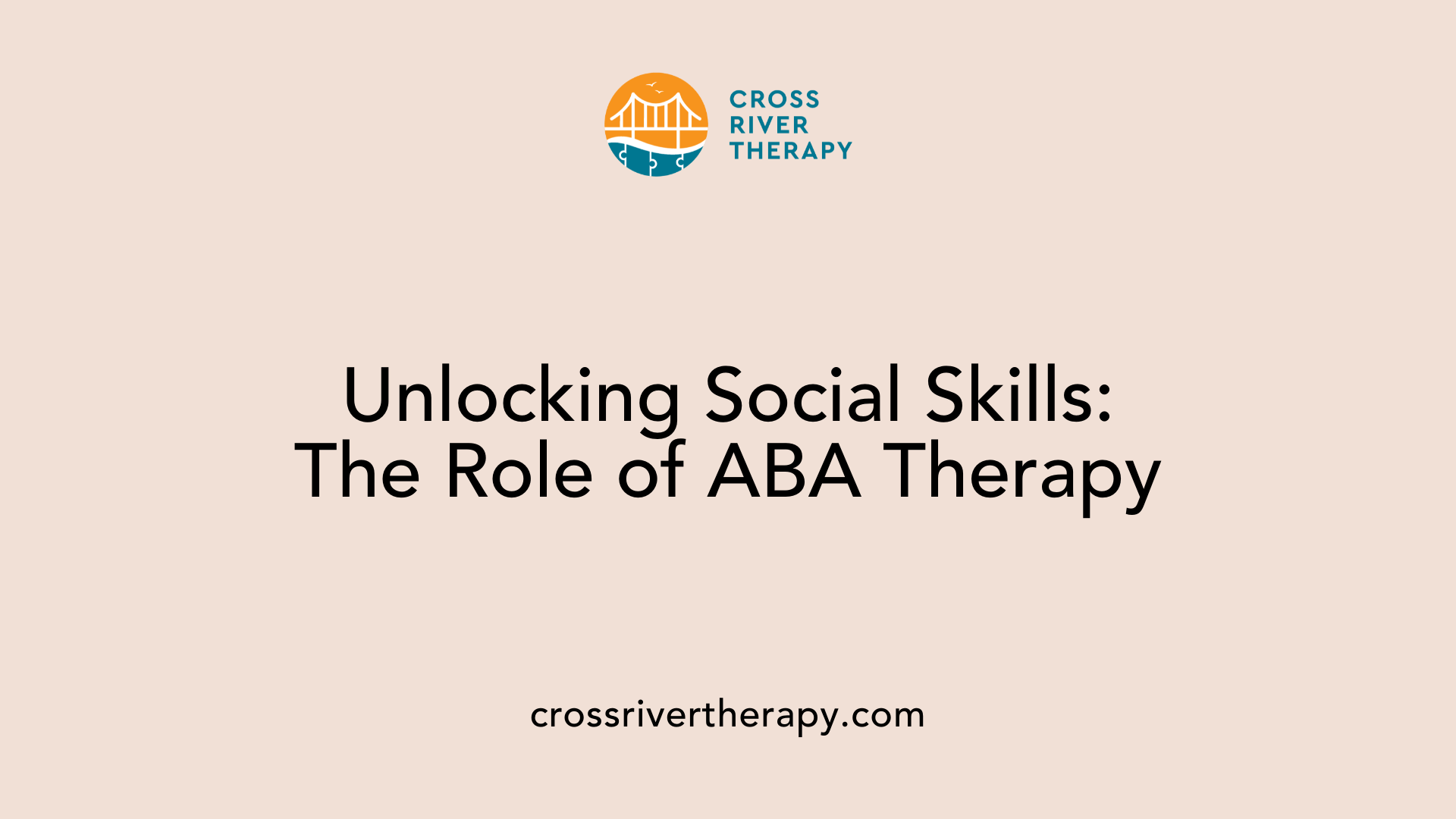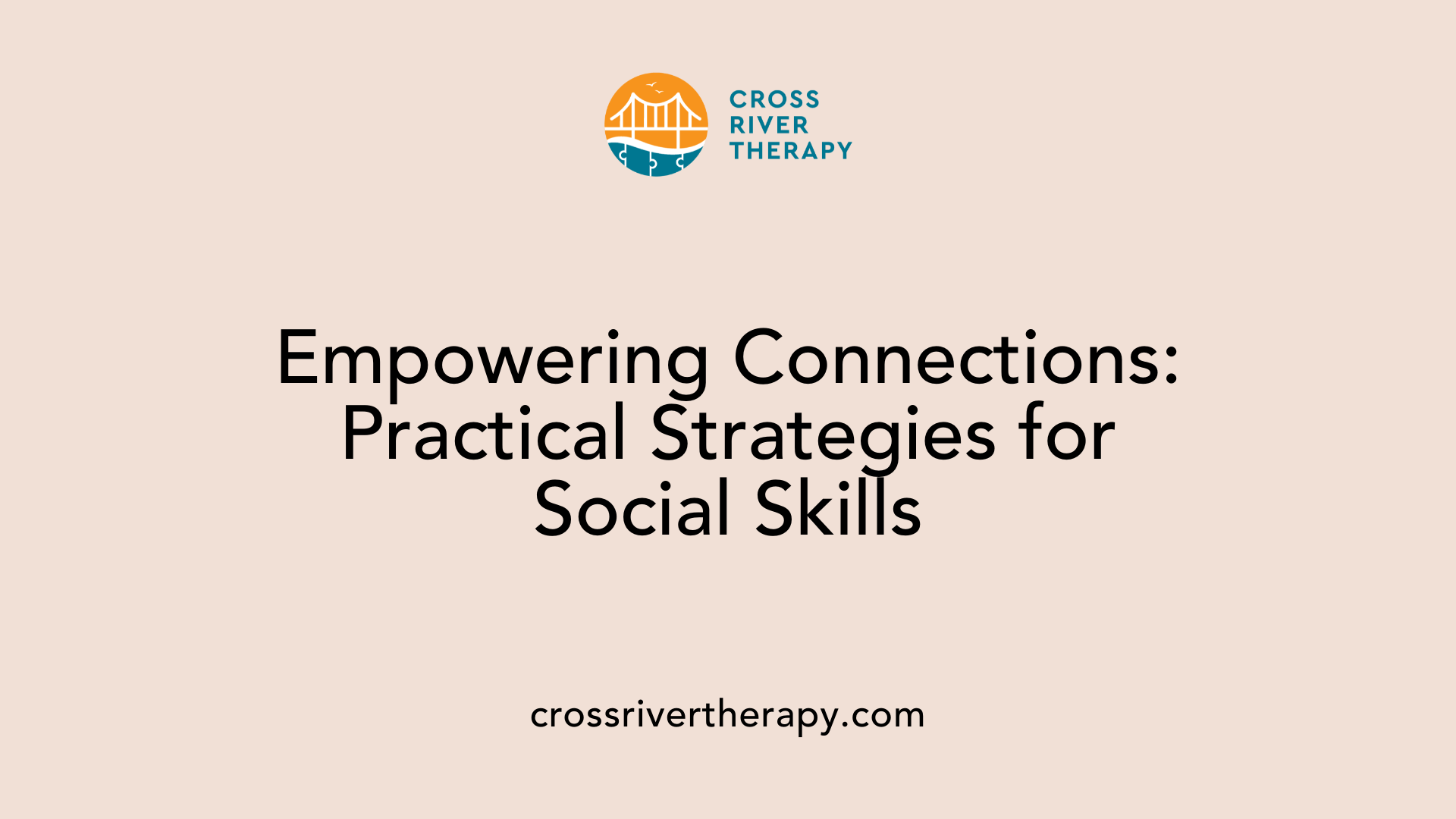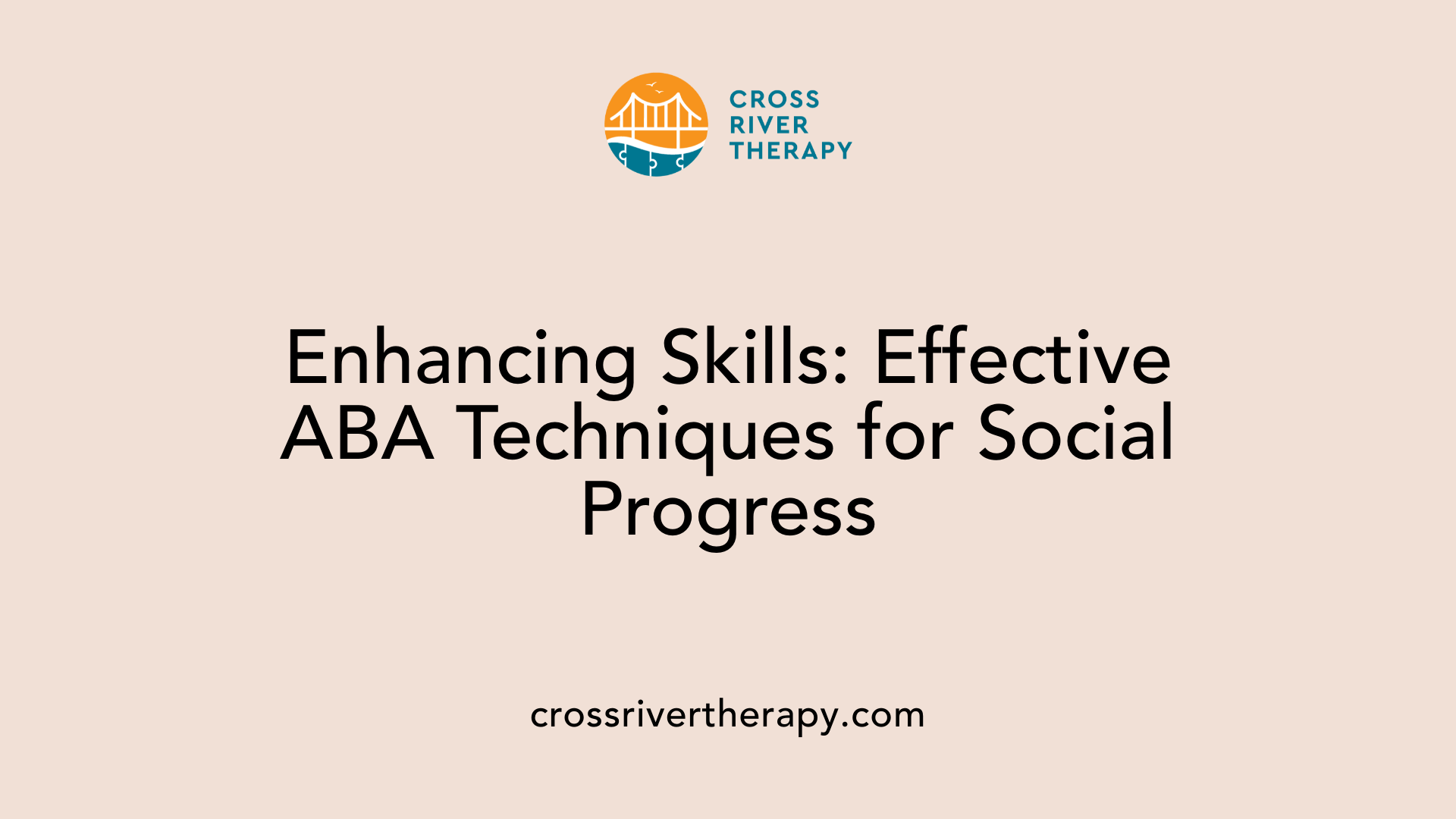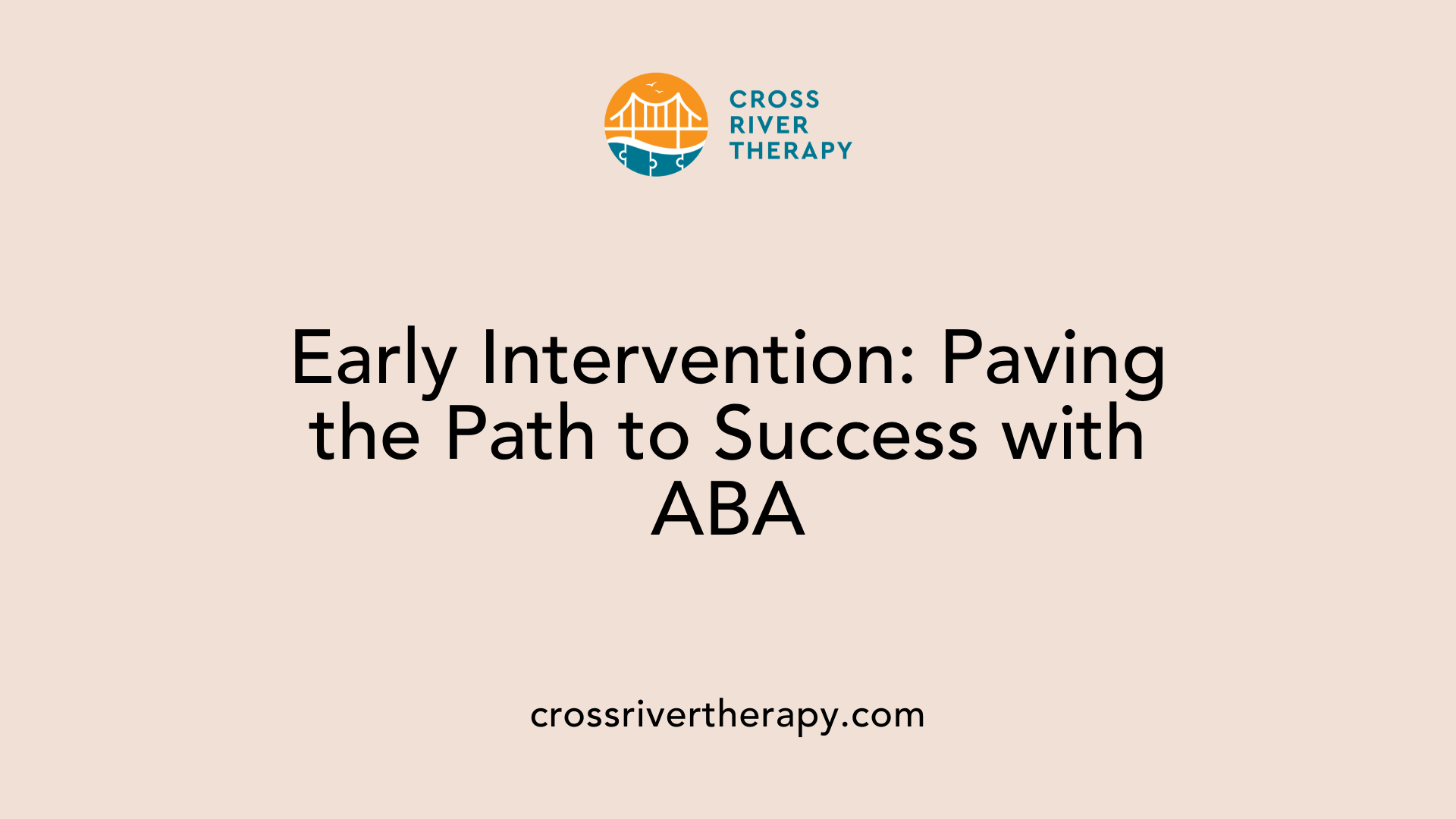Supporting Children with Autism in Social Settings Through ABA Therapy
Harnessing ABA Therapy for Enhanced Social Skills in Autism
Introduction to ABA Therapy and Autism
Applied Behavior Analysis (ABA) therapy represents a pivotal cornerstone in the treatment of children with Autism Spectrum Disorder (ASD), particularly in fostering social interactions. Since the 1960s, ABA has been integral in enhancing socially significant behaviors, ensuring that children grow into their fullest potential within their communities. This article delves into how ABA therapy serves as a robust tool in supporting children with autism in various social settings through evidence-based methods.
Understanding ABA Therapy's Role in Social Skills Development

What is ABA Therapy?
Applied Behavior Analysis (ABA) is a structured, research-based therapy designed to enhance learning and behavior. It has been effectively utilized for children with autism since the 1960s, primarily to increase helpful behaviors like communication and social skills, while decreasing harmful ones.
Why Are Social Skills Important in Autism?
Social skills are vital for children with autism, as they encompass essential abilities like sharing, turn-taking, and problem-solving. These skills are crucial for building relationships and achieving successful interactions. Unfortunately, many children with autism face challenges, including difficulty understanding non-verbal cues and maintaining reciprocal conversations, which can hinder their social engagement.
How Does ABA Therapy Help with Social Skills?
ABA therapy significantly aids social skills development by teaching and reinforcing desired social behaviors and communication skills. The therapy addresses specific challenges faced by children with Autism Spectrum Disorder (ASD), such as avoiding eye contact and misinterpreting facial expressions. Early intervention is crucial; studies show that starting ABA therapy before the age of three enhances outcomes, with over 89% success rates reported in improving social interactions and language skills.
A core principle of ABA, positive reinforcement, motivates children to repeat desired behaviors, like communicating effectively. Through targeted strategies, shared in a supportive environment, ABA therapy equips children with essential tools for navigating social situations, promoting self-confidence and better integration into their communities.
Seven Dimensions of ABA: Building a Framework for Success

What are the seven dimensions of ABA therapy?
The seven dimensions of ABA therapy create a robust framework for developing effective treatment plans. Here’s a breakdown of each dimension:
| Dimension | Description | Purpose |
|---|---|---|
| Applied | Focuses on socially significant behaviors, enhancing the individual's daily life. | Ensures interventions target relevant areas for the client. |
| Behavioral | Emphasizes measuring observable behaviors rather than internal states or feelings. | Allows for objective assessment and tracking of progress. |
| Analytic | Relies on data and scientific analysis to guide interventions and determine their effectiveness. | Supports evidence-based decision-making in treatment. |
| Technological | Ensures that procedures are clearly defined, replicable, and standardized across different practitioners. | Promotes consistency and reliability in intervention practices. |
| Conceptually Systematic | Techniques are grounded in established research principles and theories. | Ensures that practices are credible and based on solid foundations. |
| Effective | Interventions must lead to meaningful behavioral changes that improve the client's quality of life. | Focuses on results and the real-world impact of therapy. |
| Adept to Generativity | Highlights the importance of skills transferring to various environments over time for long-term success. | Promotes sustained progress outside of controlled settings. |
How do these dimensions contribute to therapy's effectiveness?
These dimensions collectively underpin the evidence-based nature of ABA therapy. By focusing on observable, measurable behaviors and using systematic methodologies, therapists can tailor approaches that yield significant and observable improvements in areas critical for individuals with autism.
For example, the Applied dimension ensures that treatment targets behaviors significant for the individual's everyday interactions, while the Effective dimension guarantees that the interventions will enhance their quality of life. Together, they lead to successful therapy outcomes by fostering skills that are transferable to various social contexts.
Practical Strategies for ABA in Social Contexts

How can you help an autistic child with social interaction?
To enhance an autistic child's social interaction, consider breaking down social skills into smaller, manageable components. Start with simple concepts such as turn-taking and sharing. Visual aids like charts and social stories can bolster understanding and retention of these skills.
Positive reinforcement plays a significant role in encouraging desired behaviors. Specific praise related to social interactions can motivate children to practice. For example, when a child successfully shares a toy or initiates a conversation, immediate commendation can enhance their confidence and willingness to engage further.
Implementing ABA in Day-to-Day Activities
In daily contexts, structured small group activities can minimize the stress of social interactions. These settings allow for guided practice in a comfortable environment, which can help reduce social anxiety. For instance, inviting peers to join in games can provide autistic children with opportunities to engage naturally while being supported by familiar adults.
Teaching empathy is also crucial. Encourage activities that involve recognizing emotions in others, perhaps through games or role-playing. This approach helps children identify non-verbal cues and understand the perspectives of their peers, thereby enriching their social interactions.
Role of Community Involvement
Community involvement serves as an invaluable aspect of enhancing social skills. Engaging in community activities, like sports or arts and crafts, offers real-world environments where learned social skills can be practiced. Peer interactions during community events provide practical opportunities to apply skills such as managing emotions or problem-solving in social settings.
As a wrap-up, integrating ABA methodologies into daily activities, combined with community support, can significantly bolster an autistic child's ability to navigate social contexts effectively. Table 1: Strategies and Techniques
| Strategy | Description | Benefits |
|---|---|---|
| Breaking down skills | Teach social skills in small, manageable parts | Easier for children to grasp |
| Positive reinforcement | Encouragement through specific praise | Increases motivation to engage |
| Structured small groups | Organized activities with peers | Reduces anxiety and fosters practice |
| Role-playing | Simulated scenarios to practice interactions | Helps with empathy and social cues |
| Community engagement | Participation in local events | Real-world application of learned skills |
Exploring ABA Techniques for Social Enhancement

What specific techniques enhance social skills?
Applied Behavior Analysis (ABA) utilizes several techniques to enhance social skills in children with autism. Two prominent methods include:
Modeling: In this technique, children observe specific behaviors demonstrated by others and then practice these behaviors themselves. This observational learning helps to reinforce appropriate social interactions.
Role Playing: This method allows children to engage in pretend scenarios where they can practice social skills in a controlled environment. It creates a safe space to experiment with interactions like sharing and turn-taking.
Another effective technique is Natural Environment Training, where children practice learned skills in real-world settings. This approach naturally reinforces social interactions among peers, encouraging applied learning.
How are ABA approaches customized?
Customized ABA programs are crucial to meet the individual needs of learners. These programs involve:
- Assessment: Assessing each child's unique behaviors, strengths, and challenges ensures tailored strategies.
- Goal-Setting: Specific, measurable goal-setting guides the therapy to target particular social behaviors for improvement.
- Ongoing Evaluation: Regular progress monitoring allows for adjustments and ensures strategies remain relevant and effective.
By personalizing these approaches, ABA therapy fosters better social interactions and outcomes for children with autism, allowing them to approach social situations with greater confidence and skill.
The Impact of Early Intervention and ABA

Importance of early ABA intervention
Initiating Applied Behavior Analysis (ABA) therapy at an early age can significantly enhance the social skills of children with autism. Research indicates that early intervention is crucial for fostering communication, language development, and social interactions. Starting therapy before the child reaches three years can lead to better outcomes as it capitalizes on the brain's neuroplasticity during formative years.
One of the core aspects of early ABA intervention is personalized assessment, which ensures that the therapy targets specific behaviors that are beneficial for the child. This tailored approach enables effective learning and practice of vital skills such as sharing, turn-taking, and emotion management.
Long-term benefits of early therapy
Long-term studies have shown that children who receive early ABA therapy typically exhibit improved social skills and enhanced intellectual functioning compared to those who start later. With consistent support, these children learn how to interpret social cues, engage in reciprocal conversations, and form meaningful relationships.
Moreover, the skills acquired during early intervention lay a strong foundation for future social interactions. This success is often attributed to various techniques used in ABA, such as modeling, role-playing, and natural environment training, all of which promote meaningful practice in real-world settings. Community involvement further strengthens these learned skills, allowing children to apply them in supportive environments.
| Area of Impact | Early ABA Intervention | Long-term Experience |
|---|---|---|
| Social Skills | Builds core abilities for social interaction | Enhances relationship-building techniques |
| Communication Skills | Encourages language use early on | Increases ability to engage in conversations |
| Emotional Skills | Teaches emotion management and empathy | Improves emotional understanding |
| Community Engagement | Provides practical social experiences | Strengthens real-world application |
ABA Therapy's Customization for Special Needs
Individualized ABA programs for autism
Applied Behavior Analysis (ABA) therapy is not a one-size-fits-all solution. Each program is tailored to meet the unique needs of children with autism. This customization involves an initial assessment to pinpoint specific behaviors that require focus. Goals are set based on the individual's strengths and challenges, and strategies are implemented to foster skills development, particularly in language, communication, and social interactions.
Various techniques are utilized to align with the individual’s learning style, including Discrete Trial Training (DTT) for structured skill-building and Pivotal Response Training (PRT) to promote pivotal skills in natural settings.
Continuous assessment and progress evaluation
Ongoing evaluation plays a critical role in ABA therapy. Therapists regularly monitor the child’s progress to ensure the strategies employed are effective. This continuous assessment allows for adjustments in goals and approaches as necessary, ensuring that the therapy evolves with the child’s changing needs and achievements. The collaborative nature of this adjustment process often involves parents and educators, reinforcing the skills taught in therapy within different environments.
Community Integration Through Natural Environment Training
Role of natural settings in ABA
Natural Environment Training (NET) is a pivotal component of Applied Behavior Analysis (ABA) that emphasizes learning in real-world contexts. By practicing skills in familiar and natural settings, children with autism can transfer learned behaviors more effectively to everyday situations.
Encouragement of community practices
Community involvement is essential in enhancing social skills for children undergoing ABA therapy. Engaging in community activities allows children to practice new skills alongside peers in varied social situations. This real-world interaction helps to solidify the concepts learned during therapy sessions, promoting greater confidence and competence in social settings.
Research shows that exposure to diverse social encounters improves skills like sharing, turn-taking, and managing emotions. These skills are crucial for fostering relationships and enhancing daily life quality for children.
Through structured practice in community environments, clinicians can observe and guide interactions, ensuring that the skills developed in therapy are effective and functional. Integrating community practices in ABA therapy not only enriches the learning experience but also empowers children to navigate social landscapes more successfully.
| Training Method | Description | Usage in Community Integration |
|---|---|---|
| Natural Environment Training (NET) | Focuses on learning in everyday settings | Provides real-life practice opportunities |
| Discrete Trial Training (DTT) | Involves structured lessons with reinforcement | Enhances targeted skill acquisition |
| Pivotal Response Training (PRT) | Encourages pivotal skills in natural interactions | Applies learned skills in spontaneous community encounters |
Starting ABA therapy early with these methods ensures that children are well-prepared to tackle social interactions as they grow.
Addressing Controversies in ABA Therapy
Are there controversial aspects of ABA therapy?
ABA therapy, while widely recognized for its effectiveness in teaching skills to autistic children, has several controversial aspects that spark criticism. Opponents argue that it historically employed harsh punitive measures and aimed to make autistic individuals conform to neurotypical standards. This approach could lead to emotional distress and identity issues. Critics also raise concerns that ABA focuses more on eliminating undesirable behaviors rather than fostering the unique skills and emotional needs of children on the spectrum.
Additionally, the intensity and standardized nature of ABA practices may overlook individual differences, leading to a one-size-fits-all approach that can be detrimental. Despite its empirical support, ongoing debates within the autistic community highlight a divide between those who find it beneficial and those who view it as harmful and coercive.
What ethical considerations guide improved methodologies?
In response to these criticisms, many practitioners are re-evaluating ABA methodologies. Focus has shifted towards ethical considerations that prioritize the well-being and individuality of autistic children. Improved methodologies emphasize consent, providing therapy in a manner that respects the child's perspective, emotional needs, and personal growth.
Innovations such as the Early Start Denver Model (ESDM) integrate play and social exchanges, allowing for a more holistic and child-centered approach. The movement towards more empathetic practices seeks to balance behavior modification goals with the recognition of each child's unique identity, skills development, and emotional health.
| Aspect | Traditional ABA Approach | Improved Methodologies |
|---|---|---|
| Focus | Behavior modification | Individualized growth & well-being |
| Techniques | Discrete Trial Training | Early Start Denver Model (ESDM) |
| Ethical considerations | Often ignored | Emphasizes child consent & perspective |
| Community involvement | Limited | Encouraged for real-world practice |
Conclusion: The Future of ABA in Social Skill Development
ABA therapy offers a structured, scientifically supported approach to developing social skills in children with autism, with a proven track record of effective outcomes. While there are areas of debate and necessary improvements, the core principles continue to guide us toward enriching the lives of autistic individuals. As we look toward the future, fostering community involvement, ensuring customization, and maintaining ethical integrity in ABA practices remain vital for supporting children with autism in social settings.
References
- Applied Behavior Analysis (ABA) | Autism Speaks
- Step-by-Step Guide to Enhancing Social Skills in Autism
- How ABA Therapy Improves Social Skills in Children With Autism
- Treatment and Intervention for Autism Spectrum Disorder - CDC
- [PDF] Explore and appreciate the uniqueness of ASD
- 8. Applied Behavioral Analysis: Roots and Applications
- Autism and Social Skills Development
- Tool Kit Excerpt - Autism Speaks
- Information for Paraprofessionals | Autism Speaks
- Helpful strategies to promote positive behavior - Autism Speaks



